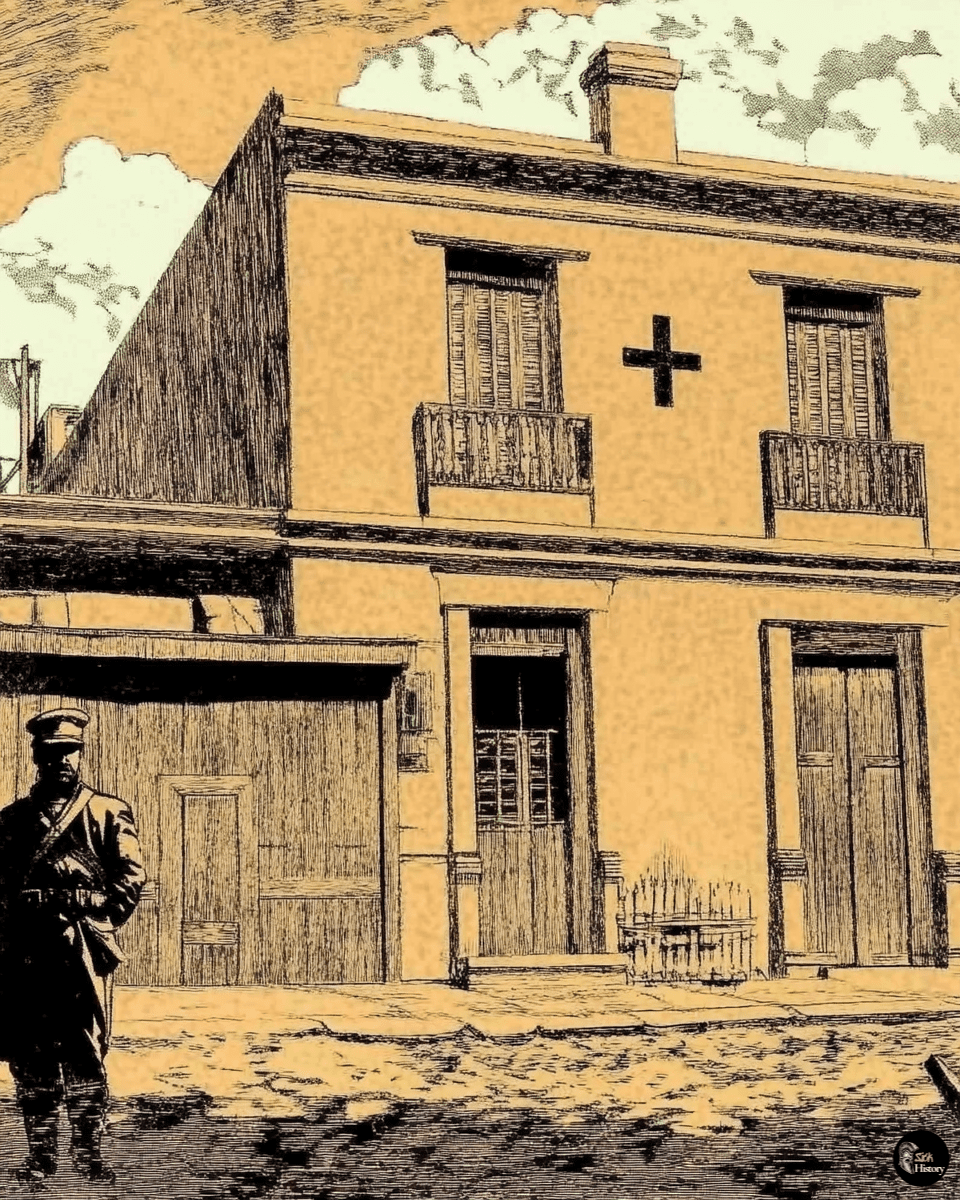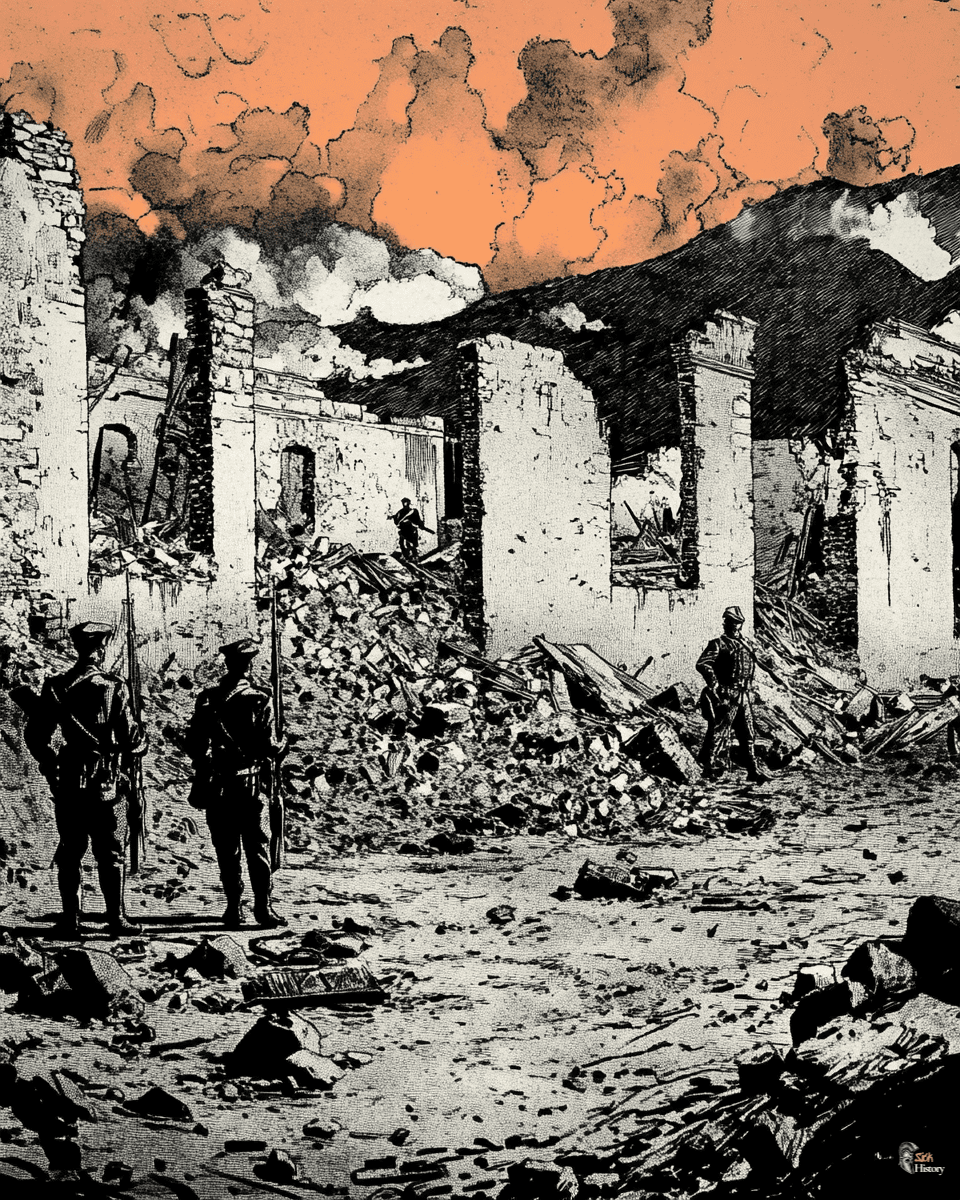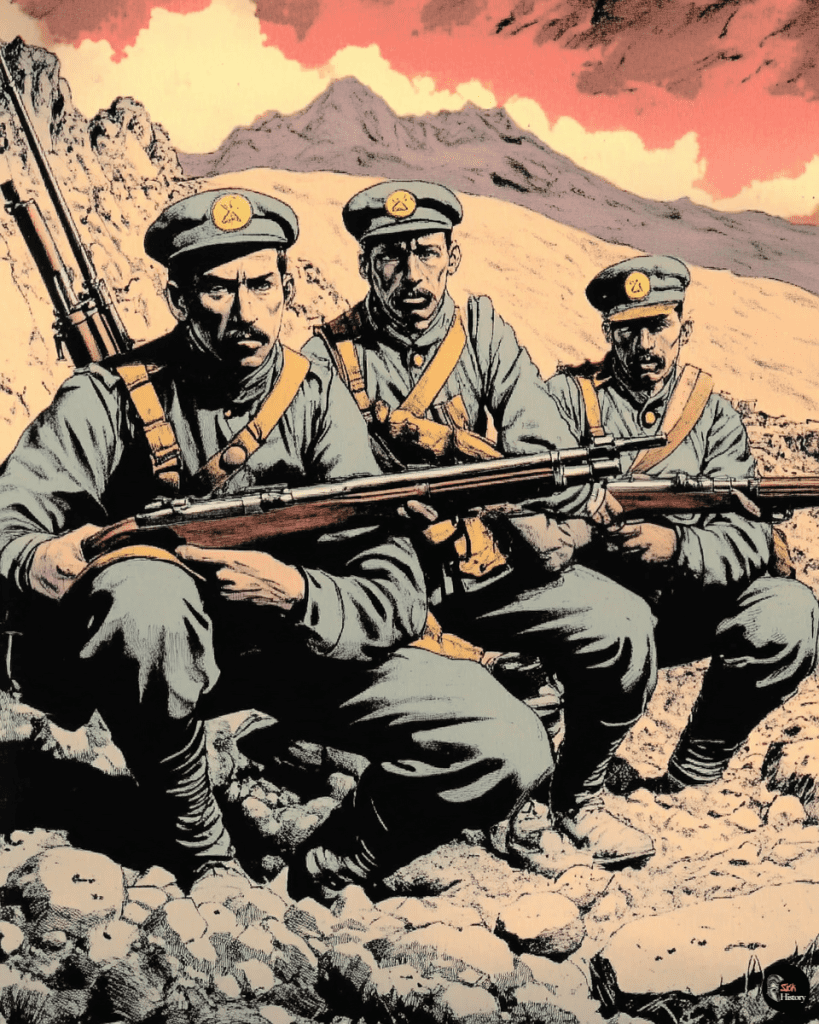The War of the Pacific, also known as the Nitrate War, was a significant conflict in South American history that reshaped the region’s geopolitical landscape. From 1879 to 1884, Chile, Peru, and Bolivia fought over control of the nitrate-rich Atacama Desert.
Chile’s victory in this conflict resulted in substantial territorial gains, including valuable coastal areas and resource-rich regions that had previously belonged to Peru and Bolivia.
The war began when Chile seized the Bolivian port of Antofagasta in response to a tax dispute. Peru, bound by a secret alliance with Bolivia, entered the conflict.
Chilean forces proved superior both on land and at sea, capturing key cities like Iquique and Tacna. The Chilean army eventually occupied Lima, Peru’s capital, in 1881.
The conflict concluded with the Treaty of Ancón in 1883, which formalized Chile’s annexation of the Peruvian province of Tarapacá and temporary control of Tacna and Arica. Bolivia lost its access to the Pacific Ocean, becoming a landlocked nation.
These territorial changes had lasting impacts on the economic and political development of all three countries involved.
Origins of the War of the Pacific
The War of the Pacific emerged from complex territorial disputes and economic interests in South America’s Atacama Desert region. Tensions between Chile, Bolivia, and Peru escalated over control of valuable nitrate deposits.
The Atacama Desert and Nitrate Resources
The Atacama Desert, spanning parts of modern-day Chile, Peru, and Bolivia, held vast nitrate reserves. These deposits became increasingly valuable in the 19th century as fertilizer and explosives production increased.
Chile and Bolivia shared an unclear border in this resource-rich area.
In 1866, Chile and Bolivia signed a treaty establishing their boundary at the 24th parallel. They agreed to share tax revenues from mineral exports between the 23rd and 25th parallels.
This arrangement proved contentious as nitrate’s importance grew.
Antofagasta and the Bolivian Conflicts
Antofagasta, a coastal region controlled by Bolivia, saw significant Chilean investment in nitrate mining. In 1878, Bolivia attempted to increase taxes on Chilean companies operating there, violating the 1874 treaty that froze tax rates for 25 years.
Chile protested this move. When Bolivia threatened to seize Chilean assets, Chile occupied Antofagasta in February 1879. This action marked the beginning of hostilities.
Chilean Interests and Peruvian Alliances
Chile sought to secure its economic interests in the nitrate-rich territories. Peru, allied with Bolivia through a secret mutual defense pact signed in 1873, became involved in the conflict.
Chile declared war on both Peru and Bolivia on April 5, 1879. The Peruvian-Bolivian alliance aimed to counter Chilean expansion and protect their own territorial claims. This decision transformed a localized dispute into a regional war that would reshape South American borders.
Chronology of Conflict and Diplomacy
The War of the Pacific unfolded through several key phases, marked by pivotal battles and diplomatic maneuvers. These events shaped the course of the conflict and its ultimate resolution.
Outbreak of War and Naval Engagements
The war began on February 14, 1879, when Chilean troops landed on Bolivian territory. Bolivia, allied with Peru, declared war on Chile on March 1. Early naval battles proved crucial in shaping the conflict’s trajectory.
The Chilean navy quickly established dominance in the Pacific.
A significant engagement occurred on May 21, 1879, when the Chilean warship Esmeralda faced the Peruvian ironclad Huáscar off Iquique. Despite the Esmeralda’s sinking, this battle became a symbol of Chilean naval heroism.
Peru’s Huáscar, commanded by Admiral Miguel Grau, initially disrupted Chilean naval operations. However, its capture by Chilean forces in October 1879 secured Chile’s control of the sea.
Tarapacá and Tactical Shifts
With naval supremacy established, Chile launched a land campaign in November 1879. The Chilean army invaded the Peruvian province of Tarapacá, rich in nitrate deposits.
The Battle of San Francisco on November 19 saw Chilean forces defeat a combined Bolivian-Peruvian army. This victory allowed Chile to secure the valuable nitrate fields in the region.
Bolivia’s involvement in the war effectively ended after the Battle of Tacna on May 26, 1880. The defeat of Bolivian troops led to their withdrawal from the conflict, leaving Peru to face Chile alone.

The Lima Campaign and Chilean Advance
Chile’s military focus shifted northward in 1880. In June, the Chilean army captured the Peruvian port of Arica, further isolating Peru’s remaining forces.
In January 1881, Chilean troops launched the Lima Campaign. This offensive culminated in the battles of Chorrillos and Miraflores on January 13 and 15, respectively.
The fall of Lima to Chilean forces on January 17, 1881, marked a turning point in the war. Peru’s government fled to the interior, while Chile established an occupation administration in the capital.

Armistice and Treaty Negotiations
Despite Lima’s capture, Peruvian resistance continued in the Sierra region under General Andrés Cáceres. This guerrilla-style warfare prolonged the conflict until 1883.
Diplomatic efforts intensified as the war dragged on. The United States attempted to mediate, but Chile rejected its proposals in 1881.
The Treaty of Ancón, signed on October 20, 1883, formally ended hostilities between Chile and Peru. This agreement ceded Tarapacá to Chile and allowed for a referendum to determine the fate of Tacna and Arica.
Having withdrawn from combat earlier, Bolivia signed a separate truce with Chile in 1884. This agreement granted Chile control over Bolivia’s coastal territory, leaving Bolivia landlocked.

